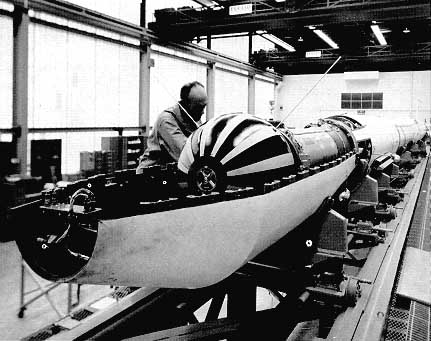The 15 December 2024 segna il 60° anniversario del lancio del San Marco 1, the first Italian satellite put into Earth orbit. This event represented a crucial moment in the history of Italian science and technology, since it marked Italy's entry into the restricted club of nations capable of operating in space, just six years after the launch of Sputnik 1 by the Soviet Union.
San Marco 1 it wasn't just a technical success, but also a symbol of ambition, international expertise and collaboration, which laid the foundations for decades of innovation and progress in the Italian space sector.
The historical context and the space race
In the 50s and 60s, the world was immersed in space race, mainly dominated by the United States and the Soviet Union. The launch of Sputnik 1 in 1957 ushered in the space age, and soon other countries began investing significant resources to reach the cosmos.
In this international panorama, Italy emerged as one of the few countries capable of developing an autonomous space program. This was possible thanks to the foresight and commitment of personalities such as Luigi Broglio, an aerospace engineer and officer of the Italian Navy, considered the "father of Italian astronautics". His vision, supported by the Italian government and by collaboration with the United States, allowed the country to start the San Marco Project, a bold initiative for the time.
The first experiments
In the 1956, a Perdasdefogu, in Sardinia, the Salto di Quirra Interforce Range was established. The town is located near Salto di Quirra, an area with large uninhabited swathes of territory in the Ogliastra region, between Cagliari and Nuoro.
Since its inauguration it has played an important role in the history of space activities in Italy. It was from here that General Luigi Broglio, he carried out the first studies on the measurement of atmospheric currents at high altitudes, launching rockets from the “Gigli Tower”, a structure entirely made of iron and named after the surname of the engineer who designed it. The tower is still present and visible inside the polygon.
The San Marco Project and the birth of the satellite
The San Marco Project took shape in the early 1960s, grazie alla collaborazione tra l’Italian Air Force, the National Research Council (CNR) and the NASA. The goal was to develop a scientific satellite to study the density of the upper atmosphere and the behavior of ionized particles.
The San Marco satellite 1 it was designed and built in Italy, with the technical and logistical support of NASA. It was a sphere of 66 centimeters per 115 kilograms capable of measuring the density of the upper atmosphere continuously and with a precision never achieved before thanks to an inertial balance, the 'Broglio scale'; there was also another experiment on board to investigate the properties of the ionosphere. After launch, the satellite remained in orbit for nine months, returning the 14 September 1965.
For launch, the American carrier was chosen Scout X-4, a proven and reliable platform. Takeoff took place on 15 December 1964 from the Wallops Island space base, in Virginia, a US site that allowed launch operations with a wide range of possible orbits.
The meaning of the San Marco launch 1
With the success of San Marco 1, Italy became the third largest nation in the world to put its own satellite into orbit, after the Soviet Union and the United States. This extraordinary result was achieved in a historical period in which few nations had the technical and scientific skills necessary to face the challenges of space flight.
The success of San Marco 1 it wasn't just a technical achievement, but also a watershed in the history of post-war Italy. It represented a sign of rebirth and modernization for a country that was rapidly rebuilding after the conflicts of the Second World War.


The Luigi Broglio Space Center and the continuity of the project
After the launch of the San Marco 1, Italy strengthened its commitment to the space sector with the creation of the Luigi Broglio Space Center, located off the coast of Kenya, near the equator. This unique site in the world, consisting of floating marine platforms, it became operational at the end of the 1960s and was used to launch the subsequent satellites of the San Marco program.
Thanks to this infrastructure, Italy managed to consolidate an autonomous capacity for space launches, further distinguishing itself on the international scene. The San Marco program continued with the launch of other satellites, each with specific scientific objectives, contributing to a growing understanding of atmospheric physics and satellite communications.
The legacy of San Marco 1
At a distance of 60 age, the launch of the San Marco 1 continues to be a cornerstone of Italian aerospace history. This satellite represented not only a technological success, but also the beginning of a path of excellence that has led Italy to become an important player in the global space sector.
Today, l’Italia è membro di primo piano dell’European Space Agency (ESA) and boasts a robust aerospace industry, ranging from the construction of advanced satellites to participation in interplanetary missions. The Italian space industry continues to be one of the most innovative technological sectors, contributing to very important projects such as James Webb Space Telescope and the program's Moon missions Artemis.
Celebrazioni per il 60° anniversario
Il 60° anniversario del San Marco 1 offers an opportunity to reflect on the importance of scientific research and space exploration for human progress. In Italy, various initiatives are celebrating this historic event, including conferences, interactive exhibitions and educational programs to bring young generations closer to the world of astronautics.
The event also represents a moment to remember the importance of international collaboration. The San Marco 1 was born thanks to the union of Italian skills and American support, demonstrating that the greatest challenges can only be successfully addressed through global cooperation.
Space Day of the National Institute of Astrophysics
I 60 years of San Marco 1, on Videolina's INNOVATION news
Conclusion
Sixty years after its launch, San Marco 1 continues to be a symbol of Italian ambition and ingenuity. His legacy lives on not only in our country's modern space endeavors, but also in the memory of an era in which a small metal cylinder, launched towards the sky, he embodied the dreams of an entire nation.
Questa celebrazione del 60° anniversario non è solo un omaggio al passato, but also a stimulus to look to the future of space exploration, with the awareness that Italy will continue to play a leading role in the conquest of the cosmos.
Sources:
Photo: Wikipedia
Text: AviaSpotter.it


